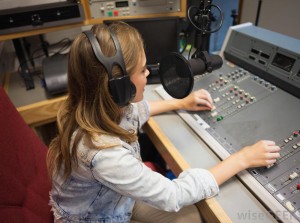Tip of the Week - 2016 03 30: What do New Announcers Find the...
 When teaching new announcers about program presentation, what do you think is the thing they find hardest of all to manage? What they are going to say next? Which button to push? How should the microphone be positioned?
When teaching new announcers about program presentation, what do you think is the thing they find hardest of all to manage? What they are going to say next? Which button to push? How should the microphone be positioned?
We all need to learn about those things and lots more. But the one thing they most forget about is to continuously monitor audio levels leaving the studio. We are not talking about the level in your headphones or the level of the speakers in the studio. This is about the sound level that is leaving the mixer or sound desk and making its way to the transmitter.
Why do they forget? Usually it is because they are thinking about everything that is coming next and not about what is happening now.
If your levels are too high it introduces distortion into the sound quality – and you want the best sound you can possibly deliver. Some transmission lines or transmitters are fitted with compressors which will try and compress or reduce the too loud sound. However it will still be distorted for broadcast.
If your levels are too low the listener may not be able to hear the program. Remember you are listening in a quiet environment. They may be listening where there is a lot of machinery or people noise around their radio.
The listener does not want to be turning their radio up and down all the time. You can help them by continuously monitoring your studio output levels. You may play two songs back to back. But the levels on the recording or audio files might be very different – never assume they are the same.
Derek Kickbush
: Blogs